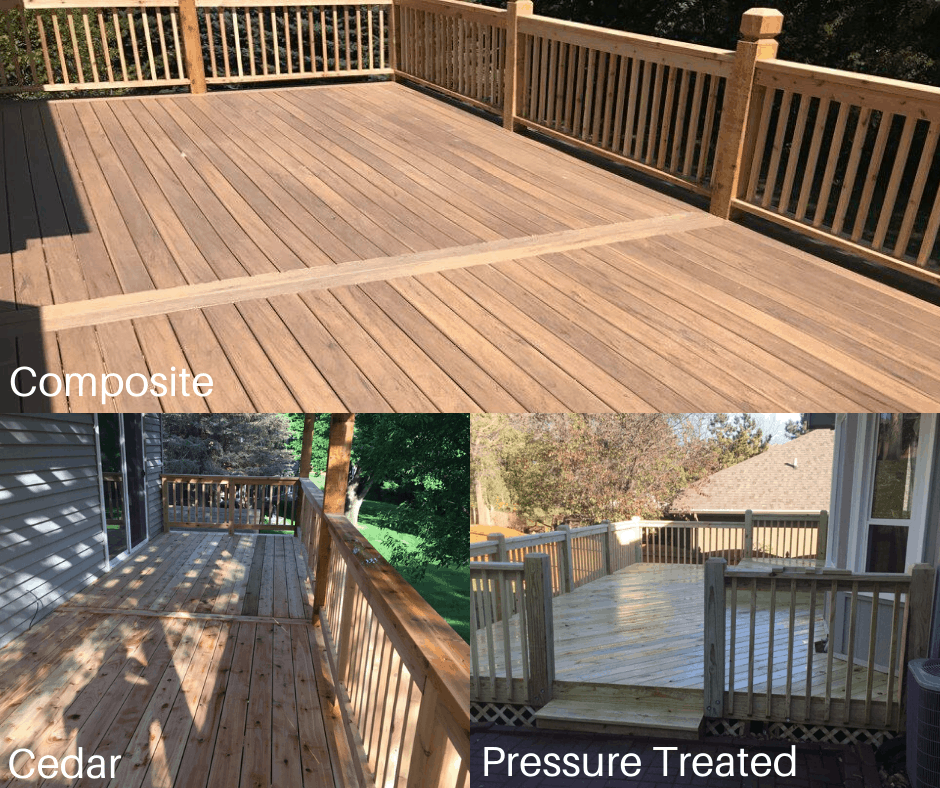NOTE: This blog was written before the current world health epidemic. With heavy hearts and at the same time hopeful optimism, we’re posting this blog for its useful content for the future. We can still pressure wash or build your deck at this time, but contact us for any updates because things are changing by the minute. And always feel free to call with questions. We’ll get through this together. After we do, we’ll come over and celebrate on your safe, sturdy deck.
Keeping your family safe is the most important job year-round. This task becomes more challenging as the weather gets warmer and brings in the season of entertaining on your deck. With spring and summer come graduation parties, BBQs, and many other opportunities to entertain family and friends. With more people using your deck, it is imperative that you ensure your deck is safe for your guests. If you’re planning on entertaining on your deck this upcoming season, here are some spring deck maintenance and repairs you may want to consider.
Power washing
Once the weather warms up, it’s important to have your deck cleaned before you attempt any other repairs. The best way to do this is by having it power washed. Power washing will remove any of the dirt, debris, and mold. It also removes anything that has accumulated on your deck throughout the winter months.
On average, you should power wash your deck once a year, and doing it after winter is a great time to get it done. Having your deck power washed prepares it to be inspected for any further needed upkeep or repairs.
Repairing Rot
A common repair that decks may need after a harsh winter is the removal of rot. Whether just early signs of the wood chipping away, mold formation, or a more advanced case of wood rot, you’ll need to have it removed immediately. If your deck wasn’t well-maintained through the winter, rot may have had the chance to form and worsen. Rot is a dangerous condition that can impair the health and structure of your deck. At the beginning of the spring season, we’ll inspect your deck for rot and will take care of it right away before it gets worse.
Repairing Boards
Your deck may be susceptible to cracked or warped boards. Cracked boards can break, causing injuries to you and your guests. If the damage is minimal, you can have individual boards replaced to keep your deck safe and beautiful.
An even better solution is to take care of your deck by having it washed, refinished, and sealed on a regular basis. This way you’ll be able to prevent cracked or warped boards and avoid the chore of having them repaired.
Checking Joints
Checking the joints is another important deck repair to do before you entertain people on your deck. Joints can rust and corrode over time and they may eventually need to be replaced. Have joints and other hardware checked for signs of wear. If they look like they need to be repaired or replaced, a professional can take care of them.
Deck Expansion
If you enjoy entertaining, you may want to be able to fit a large number of people on your deck. If your deck is on the smaller side, you may want to consider expanding your deck’s size. Creating more deck space can involve simply adding additional foundation, support, and deck boarding, or can involve more intricate plans that involve multi-level deck space, built-ins, such as planters, and much more.
Deck Staining
Finally, deck staining is one of the most important spring deck maintenance measures you can take. The winter weather can wreak havoc on the wood of your deck. The hot summer sun can dry and discolor your wood or wood composite deck material.
Entertaining throughout the summer can also cause your deck to see a lot of wear and tear. Periodic staining and sealing of your deck will help you preserve the beauty of the materials used to build your deck. If your deck hasn’t been stained in a while, you may want to look into getting it stained to keep it looking great and free from preventable damage.
All About Decks Omaha is here to serve you and help with your spring deck maintenance, whether you need deck repair, power washing, cleaning, staining, refinishing, or a whole new deck.


